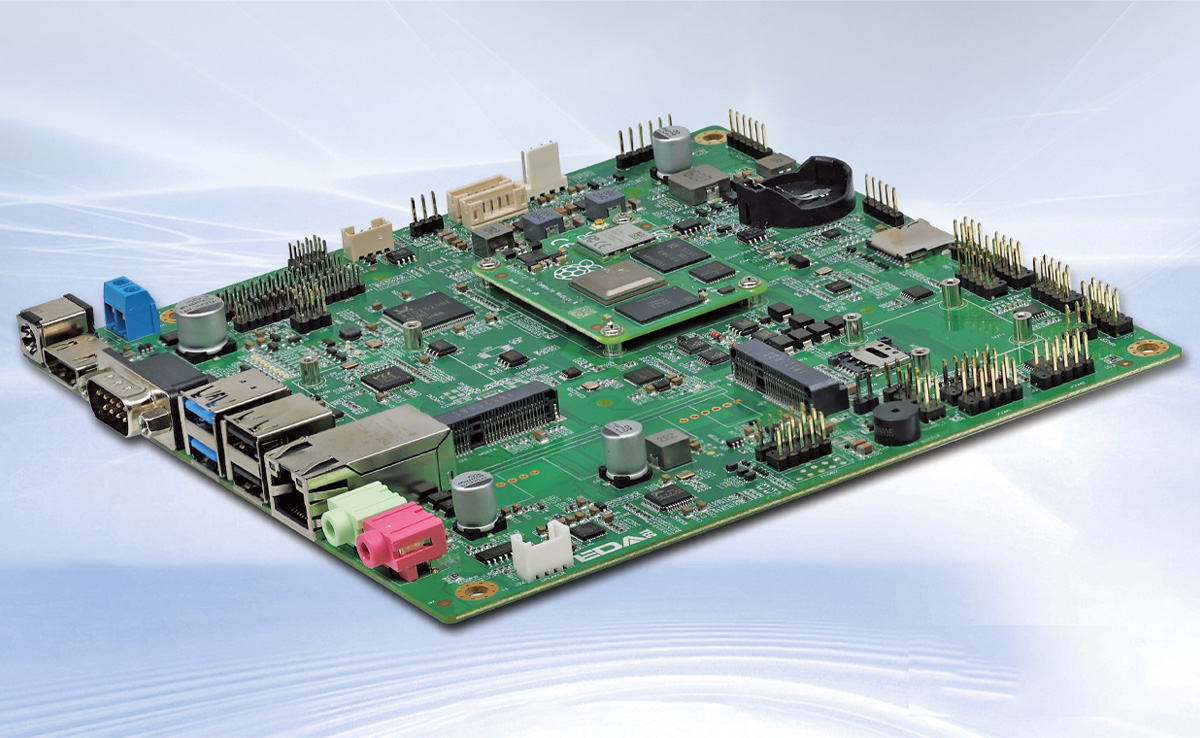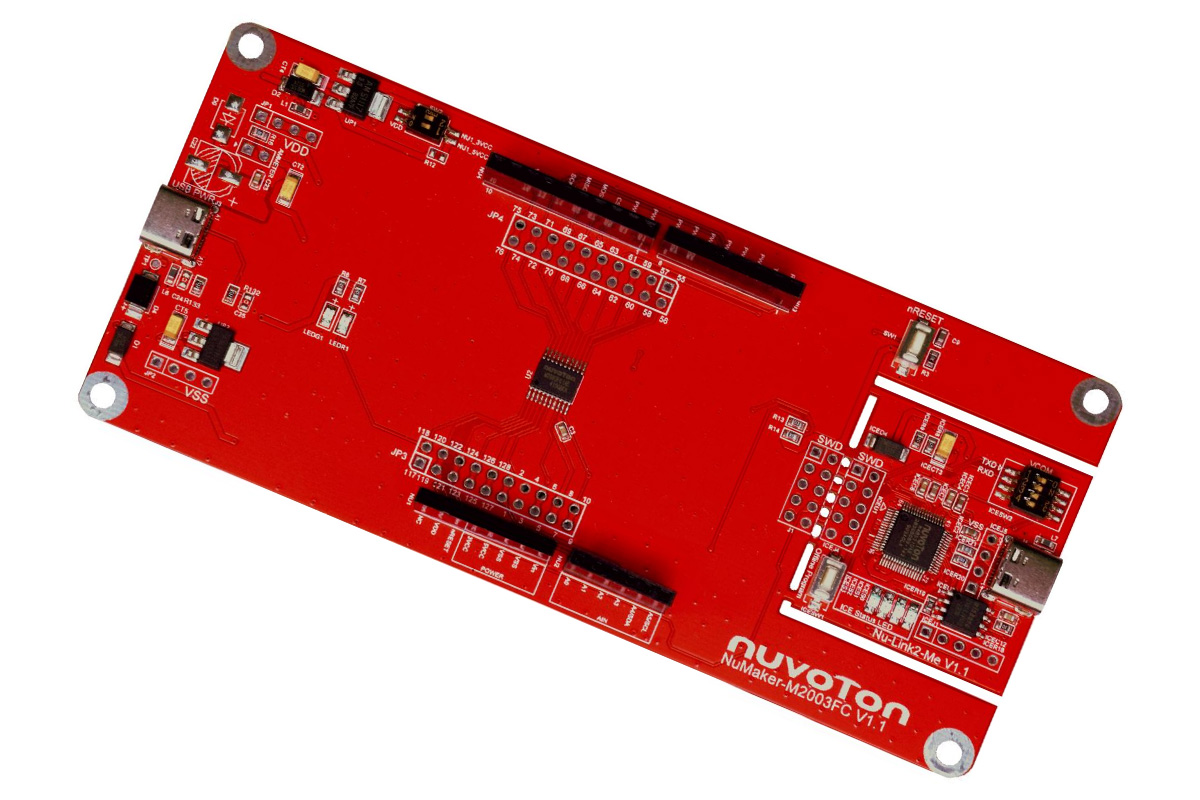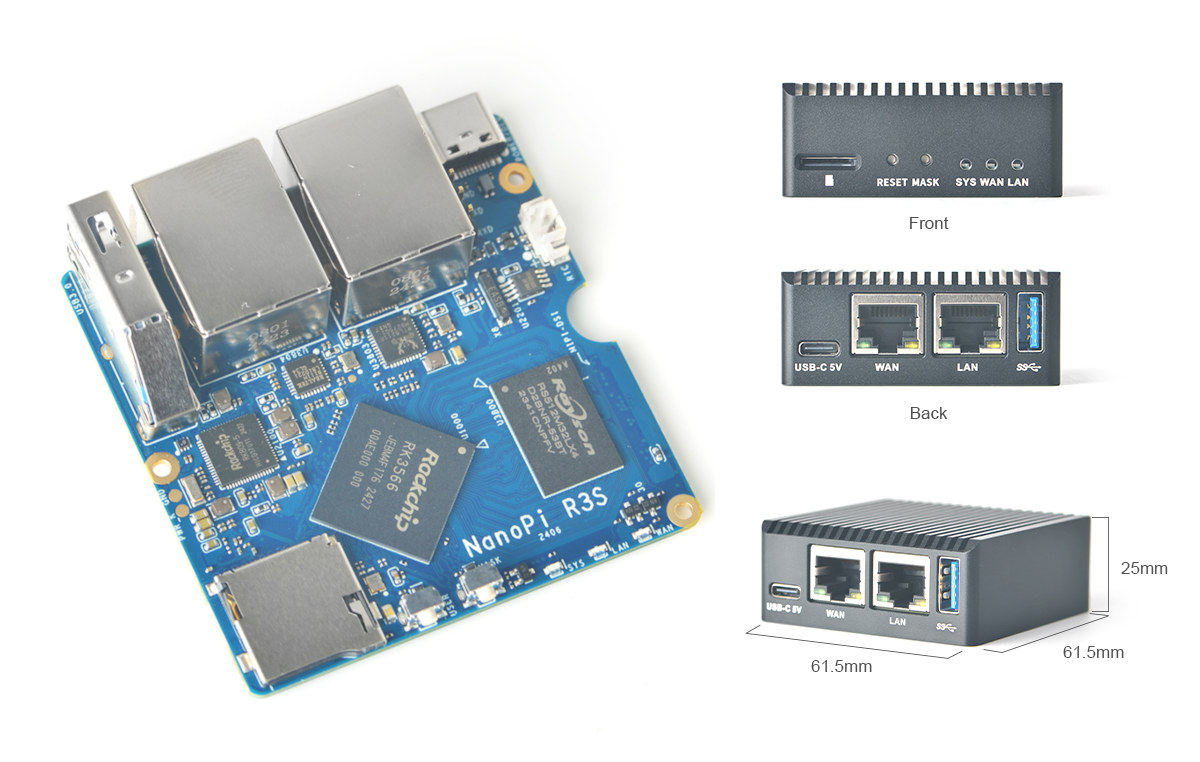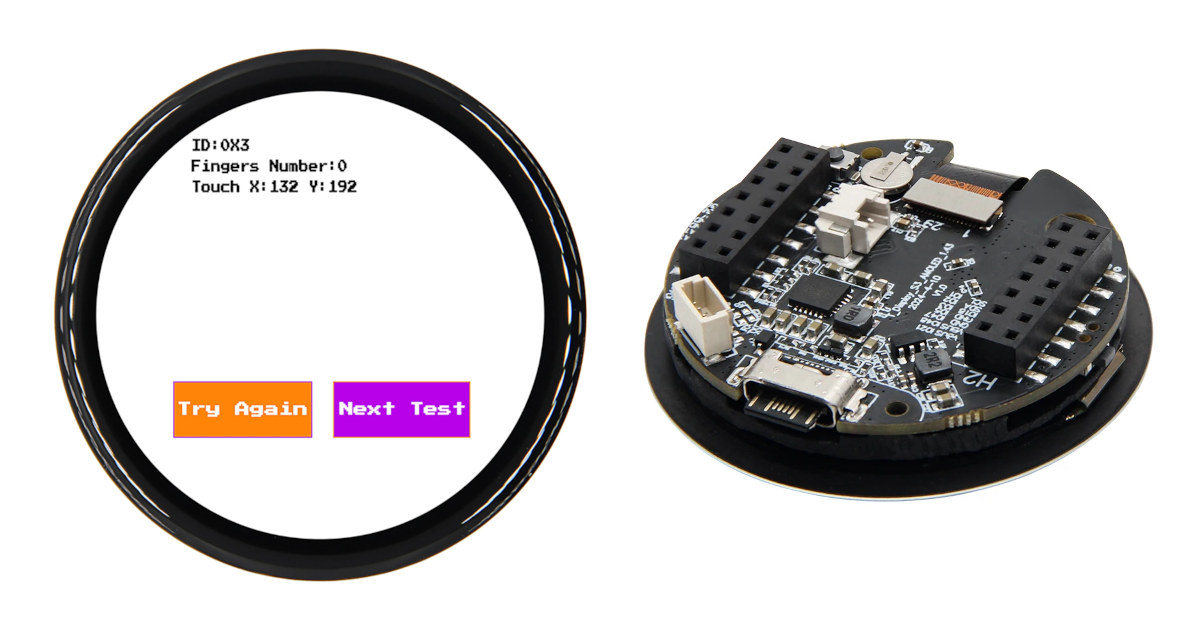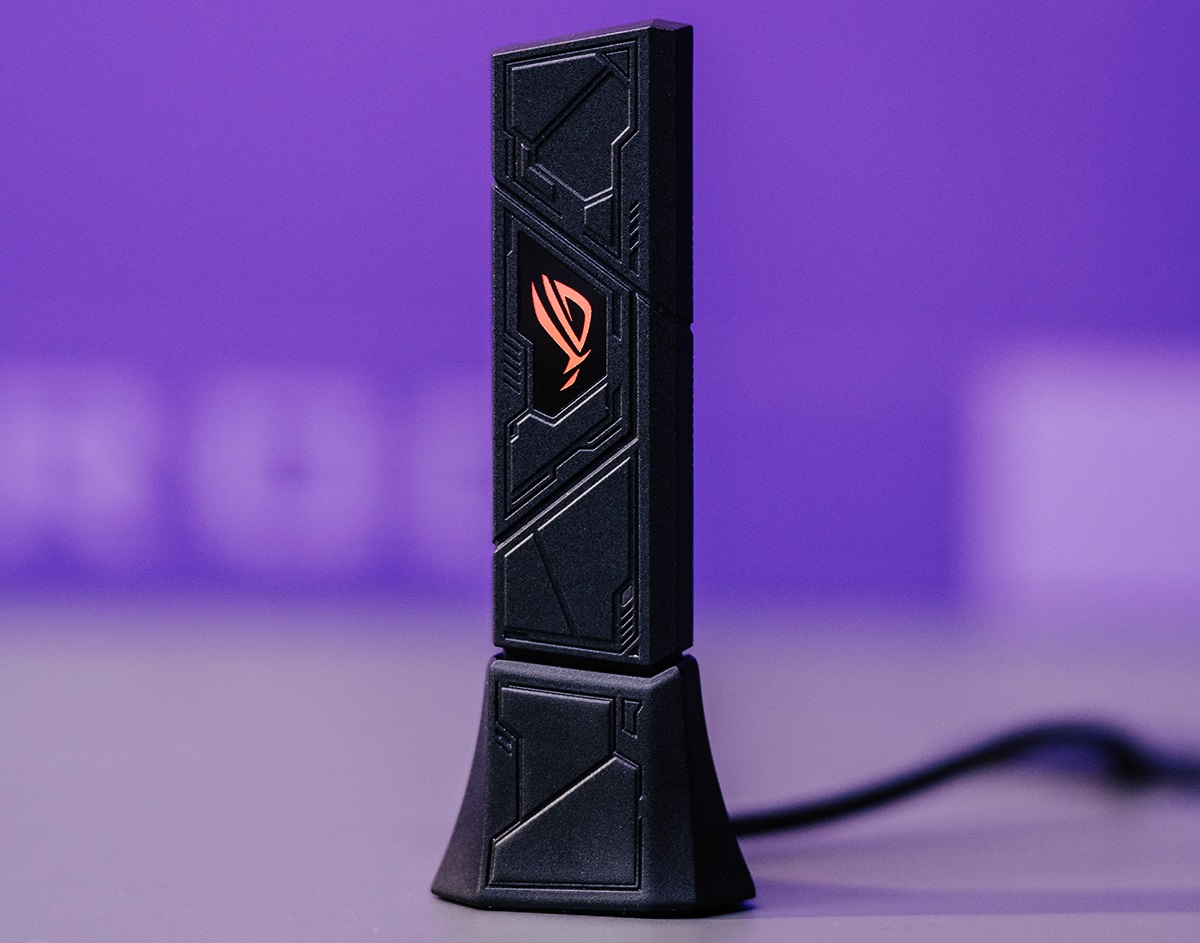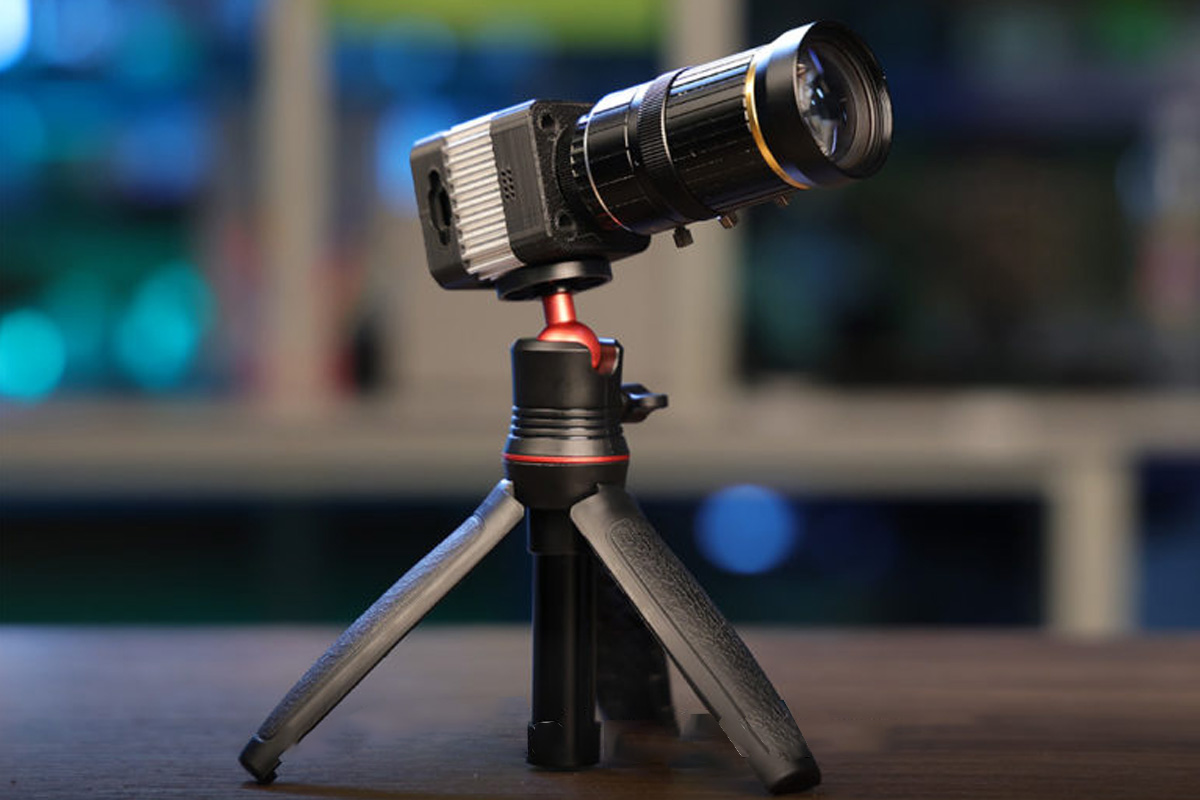The EDATEC ED-SBC2300 is an industrial mini-ITX motherboard built around the Raspberry Pi CM4. The motherboard offers various storage options including eMMC flash, microSD card, and mSATA SSD. It supports dual displays (HDMI + LVDS or HDMI + eDP with touchscreen), offers diverse connectivity with USB, GbE port, RS232, RS485, and GPIO, and boasts integrated security features like RTC, EEPROM, and crypto authentication. The board supports a wide 9V-36V DC power input and PoE is also an option through an add-on board. With its compact size, flexible I/O, and industrial-grade features, the ED-SBC2300 series suits applications like kiosks, digital signage, industrial automation, and IoT devices. Previously we have written about similar products from EDATEC including the RPI CM4-based industrial computer, the EDATEC ED-HMI2320-156C fanless panel PC, and the EDATEC ED-HMI2120-101C, also an industrial panel PC with an 10.1-inch capacitive touchscreen. Feel free to check those out if you are interested […]
Maker Go RA4M1-R4 core board is a cheap Arduino UNO R4 Minima clone taking up to 50V DC input
The Maker Go RA4M1-R4 core board is another Arduino UNO R4 Minima clone but offered at a price point much lower than the original and the Waveshare R7FA4 Plus A (another clone) since it shows up for only $0.99 on AliExpress with free shipping. Note that the ultra-low price is because of a “Welcome deal” on AliExpress, and the regular price is $7.76, so not everyone may get it for $1. About $8 is still cheap compared to the $20 (18 Euros) asked for the official Arduino UNO R4 Minima board. Let’s look at the clone in more detail to find out if they’ve made any changes to the board. Maker Go RA4M1-R4 core board specifications: Microcontroller – Renesas RA4M1 Arm Cortex-M4F MCU @ 48 MHz with 32KB SRAM, 256KB flash USB – 1 x USB Type-C port for power and programming Expansions – Arduino UNO female + male headers […]
Nuvoton M2003 is a low-cost Arm Cortex-M23 MCU for AIoT and Industrial applications
Nuvoton has recently launched the Nuvoton M2003 series of low-cost Arm Cortex-M23 microcontrollers which at the time of writing features M2003FC1AE and M2003XC1AE microcontrollers. Major features include a 32-bit hardware multiplier/divider, 32 KB of flash memory, 4 KB of SRAM, multiple communication interfaces (UARTs, I²C, USCI), analog peripherals (8-channel 12-bit ADC, 6-channel 16-bit PWM), and support for a wide voltage and temperature range. These features make this device useful for AIoT, industrial automation, smart homes, energy storage, and automotive electronics, and the company says the low-cost M2003 family offers a migration path from 8-bit to 32-bit designs. Feature-wise both the MCUs are the same and the only difference is in their package. The M2003FC1AE comes in a TSSOP20 package, whereas the M2003XC1AE comes in a QFN20 (3x3mm) package. The NuMaker-M2003FC development board is also offered for evaluation. Nuvoton M2003 series MCU specifications Device – Nuvoton M2003 series of MCUs M2003FC1AE […]
NanoPi R3S – A low-cost Rockchip RK3566 SBC and dual gigabit Ethernet router
FriendlyELEC NanoPi R3S is a low-cost Rockchip RK3566 SBC and router with two gigabit Ethernet ports, a USB 3.0 host ports, a USB-C port for power and data, a microSD card slot, Reset and Mask buttons, and a few LEDs. It also features a MIPI DSI connector for people wanting to connect a display. Its design and size are similar to the NanoPi R5C dual 2.5GbE SBC and router, so it could be viewed as a low-cost alternative with dual GbE, no M.2 socket for WiFi & Bluetooth, only one USB 3.0 port, and no HDMI video output. The company promotes it as an inexpensive platform for IoT applications, basic NAS solutions, and so on. NanoPi R3S specifications: SoC – Rockchip RK3566 CPU – Quad-core Cortex-A55 processor @ up to 2.0 GHz GPU – Arm Mali-G52 MP2 GPU NPU – 0.8 TOPS AI accelerator VPU 4Kp60 H.265/H.264/VP9 video decoder 1080p60 […]
T-Display-S3-AMOLED-1.43 – A 1.43-inch round AMOLED touchscreen display with an ESP32-S3 wireless MCU
We’ve already seen a few ESP32-S3 boards with an AMOLED display and plenty with round displays such as SB Components’ Dual Roundy, LILYGO T-RGB ESP32-S3, MaTouch ESP32-S3 Rotary IPS display among others, but I had yet to see an ESP32-S3 board with a round AMOLED display. That’s just what the LILYGO T-Display-S3-AMOLED-1.43 has to offer. The ESP32-S3 board features a 1.43-inch round AMOLED with 466×466 resolution and a capacitive touchscreen, a microSD card slot for storage, an RTC with backup battery, two 14-pin headers and a Qwiic UART connector for expansion, a USB-C port for power/charging and programming, and a 2-pin connector for a LiPo battery. T-Display-S3 AMOLED-1.43 specifications: SoC – Espressif ESP32-S3R8 CPU – Dual-core Tensilica LX7 microcontroller up to 240 MHz with vector instructions for AI acceleration Memory – 8MB PSRAM Wireless – WiFi 4 and Bluetooth 5.0 LE + Mesh connectivity Storage – 16MB SPI flash, MicroSD […]
ASUS ROG USB-BE92 is a USB 3.2 Gen1 WiFi 7 BE6500 adapter
The ASUS ROG USB-BE92 is a USB 3.2 Gen1-based WiFi 7 adapter that supports IEEE 802.11a/b/n/ac/ax/be standards. It operates in the 2.4GHz, 5GHz, and 6GHz bands, with dual internal antennas for improved signal reception. The device is designed for high-throughput wireless performance in BE6500 networks, supporting MU-MIMO technology. Primarily targeted for Windows 10 and 11 platforms, it enables next-generation wireless connectivity when paired with WiFi 7 routers and compatible client devices. We previously discussed several WiFi 7 modules, SBCs, and chipsets including Compex WLE7002E25, 8Devices Noni, Banana Pi BPI-R4, Fibocom FG370, and MediaTek’s Filogic 860 and Filogic 360. These modules offer different features and performance levels, so I recommend checking them out if you’re interested in WiFi 7 technology. The ASUS ROC USB-BE92 is one of the first WiFi 7 USB dongles that made it to market. ASUS ROG-USB-BE92 specifications: Wi-Fi Bandwidth – Tri-band BE6500 Top Speed – Max 2880Mbps […]
reCamera modular AI camera features SG2002 RISC-V AI SoC, supports interchangeable image sensors and baseboards
Seeed Studio’s reCamera AI camera is a modular RISC-V smart camera system for edge AI applications based on SOPHGO SG2002 SoC. The camera is made up of three boards: the Core board, the Sensor board, and the Baseboard. The Core board includes hosts the processor, storage, and optional Wi-Fi. The Sensor board consists of image choice of image sensors, and the Baseboard provides various connectivity options including USB Type-C, UART, microSD, and optional PoE port and CAN bus connectivity options. At the time of writing the company has released the C1_2002w and C1_2002 core boards. The C1_2002w core board includes eMMC storage, Wi-Fi, and BLE modules, and the C1_2002 features extra SDIO and UART connectivity, but not WiFi. Both boards use the SOPHGO SG2002 tri-core processor and can be paired with various camera sensors for applications such as robotics, healthcare, smart home, as well as buildings and industrial automation. […]
Comparison of Raspberry Pi 5 with 2GB and 8GB RAM – Hardware, benchmarks, and power consumption
The Raspberry Pi 5 with 2GB RAM was launched last week, and since I got a sample for review, I decided to compare it to the Raspberry Pi 5 with 8GB RAM to see if I could find any noticeable differences between the two boards. I’ll start with a visual inspection to show differences on the PCBA, then check system information, run some benchmarks, check power consumption, and finally try to open as many tabs in Firefox until the 2GB RAM is filled and the system becomes unusable. Raspberry Pi 5 2GB vs Raspberry Pi 8GB – visual inspection We should first have a quick look at the boards and packages there’s no obvious difference apart from seeing 2GB RAM and 8GB RAM on the respective packages. But if we look closer, we can see the resistors for memory capacity detection are in different locations for “2G” and “8G”, and […]


